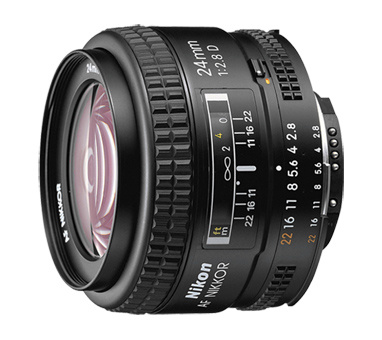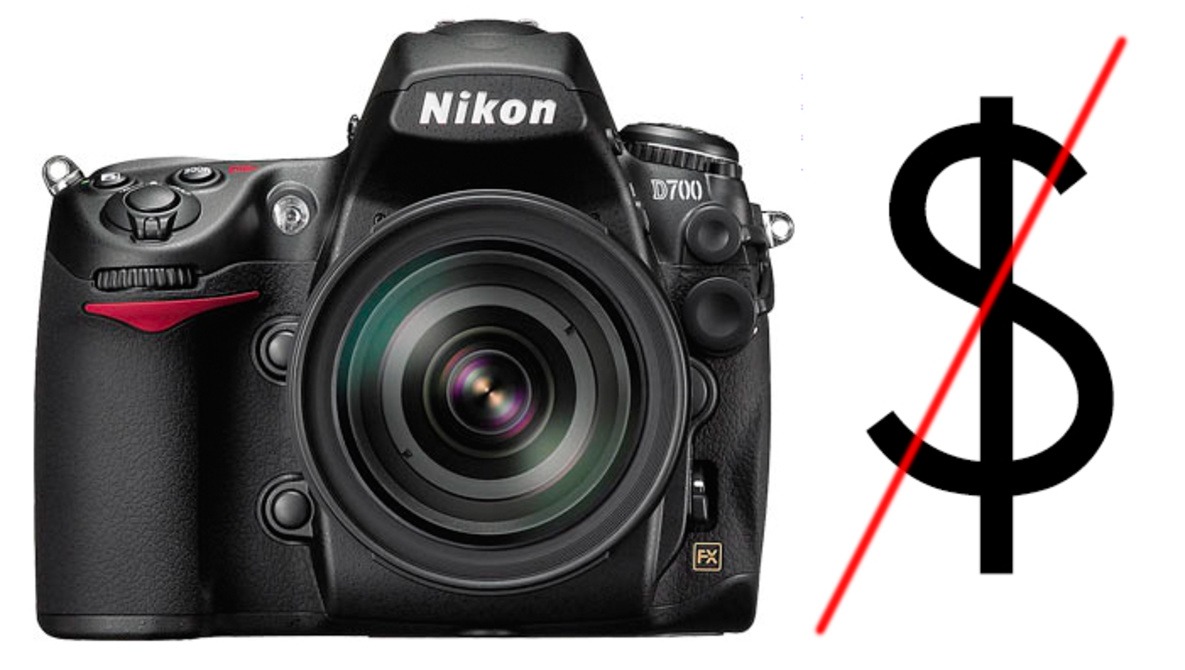Nikon has a long history of venerated products, many of which are still just as useful today as they were in generations past. Here's a list of some of the best products of yesteryear.
N80
The great thing about film cameras is that nowadays, the price-to-features ratio is remarkable as compared to their digital counterparts. With a bright, informative viewfinder, threaded cable release, built-in focus assist, a viewfinder grid for horizon leveling, and an excellent metering system, the N80 has some features I wish my 5D Mark III had (I never have to fiddle with my wireless connection when there's a threaded cable release socket). This is a great, jack of all trades film camera if you're looking for something to cover all situations relatively well without being overkill. There are a few quirks: It can't shoot infrared film, it has no mirror lockup, and the sync speed is 1/125s, but with features like those mentioned previously, plus a top LCD, 2.5 FPS continuous shooting (plenty fast enough for film) and a very quiet, unobtrusive operating sound, the N80 is the perfect camera for someone looking to have a film body to experiment with or to supplement their digital system.
Price: A good used copy should run you $50-80.

F6
Want the cream of the crop in film cameras? Look no further. A 100 percent coverage viewfinder, 37 millisecond shutter lag, 3D color matrix metering system, 8 FPS shooting (with grip), 1/250s sync speed (up to 1/8,000s in Auto HSS), an alloy body, and a silent mode just begin to delineate the features of the F6. As I mentioned with the Canon 1V a few weeks ago, once you've experienced a high-quality film camera chewing through a physical roll of film in 4–5 seconds, you gain a new appreciation for the mechanical precision and aptitude of these machines. Believe it or not, Nikon is still manufacturing these bodies; thus, you can pick up a new copy, should you so choose.
Price: $2,200 new, $750 used.

The Nikon F6
D700
The D700 is an excellent all-around full-frame DSLR from a few generations back (July 2008). Like all DSLRs from previous iterations, the two things you automatically sacrifice are noise performance and resolution, but don't get too put off by this. With a native ISO range of 200–6,400 (expandable to 100–25,600), the D700 still produces excellent images at low ISOs and reasonably good images up to and including ISO 3,200, which is quite workable for most applications. At 12.1-megapixels, you won't have that much latitude for cropping, but there is certainly plenty of resolution for almost all situations. Other features that are still competitive seven years after its introduction include an 8 FPS continuous shooting speed (with the optional MB-D10 battery), 1/8,000s shutter, and a 51-point (15 cross-type) AF system. If you don't need the latest in high ISO performance or resolution, this can be a great all-around camera that can free up some money for a nice lens to pair with it.
Price: $900 is the going rate for excellent copies.
NIKKOR 35-70mm f/2.8 D
This lens was Nikon's standard range professional zoom lens before the 28-70 and 24-70 versions emerged. It is particularly well-known for its rich and contrasty color rendition and its good center sharpness at all apertures and focal lengths. It is rather susceptible to flare, however, though the "D" version features coatings that alleviate some of this problem. Autofocus performance is also quite good. It is the only non-telephoto push-pull zoom I have ever come across and even more bizarrely, the push-pull mechanism is reversed: fully extended corresponds to 35mm and fully retracted corresponds to 70mm. Nonetheless, build quality is excellent and image quality is quite good wide open and improves dramatically as one stops down, making this lens a continuing hidden treasure in the kits of many pros. Those used to more modern zoom ranges might find 35-70mm a bit restrictive, but these are still very useful focal lengths that almost any photographer will find themselves working with at some point. This makes a great, durable, high quality walk-around or event lens.
Price: A good condition copy should be about $400.
NIKKOR 35mm f/2 D
I love old primes. Because they are optically simpler than their zoom counterparts (this lens is 6 elements in 5 groups), they were often a few steps ahead in terms of image quality (as are modern primes). In addition, I often find that older primes exhibit a certain character that makes them intriguing, whereas older zooms often exhibit a character that makes them, well, bad. This lens is small (just 7 ounces), has a fast aperture and is one of the most useful focal lengths you can have in your bag. Using a screwdrive autofocus, it's not particularly fast, but it is generally accurate. You should be aware that corner performance is rather lackluster until about f/5.6 (particularly on FX sensors), but vignetting, flare, and distortion are all well-controlled. With seven non-rounded aperture blades, this lens isn't going to win any awards for bokeh, but rarely do we worry too much about bokeh at such a focal length. If you want a straightforward, mostly good standard lens in your bag at a bargain price, this is a great pick.
Price: At about $300, this lens is still a good deal.

NIKKOR 24mm f/2.8 D
I love the 24mm focal length; it is to me what the 35mm length is to most other photographers. In my opinion, it lends a cinematic, larger than life feel to photos that inspires endless creativity. This lens is well-known for being very sharp, with great color rendition and reliable and fast autofocus. At f/2.8, it's not ultra-fast like some of its f/1.4 counterparts, but it's no slouch either. Being sharp, relatively fast, and having an interesting field of view, it's a great lens for street photography, group portraits, architecture, and landscapes.
Price: Top copies typically cost about $280.

NIKKOR 28-200mm f/3.5-5.6 G IF-ED
This lens shouldn't be that good. It's a compromise walk-around lens with a zoom range nearly double that of a normal compromise walk-around. Yet, it's light, reasonably sharp (more so when stopped down), controls aberrations well, has rounded aperture blades for better bokeh, and is quite contrasty. Don't expect it to win any contests for durability, speed (which you should take note of for depth of field and low light purposes), or absolute image quality, but for a do-it-all lens that delivers consistently good quality images, you can't do better at this price point.
Price: Excellent copies hover around the $300 mark.
70-210mm f/4
This is a little known lens, as Nikon only produced it from 1986–1988 before discontinuing it for a variable aperture version. It does have its quirks, including noisy AF gears and an occasional tendency to front focus at the telephoto end, but it's durable, fast-focusing, and produces some of the most organic images I've seen in quite some time. Colors are natural and contrasty, while bokeh is clean and unobtrusive. A constant f/4 aperture doesn't make it a low light leader, but it is certainly workable in most situations, particularly outdoors.
Price: When you can find a copy, expect to pay about $230.
A Quick Note
Remember when buying used gear that service or parts will often be unavailable. Nonetheless, like most gear, if you take good care of it, it will likely last you a long time. If you’re looking for quality Nikon gear at a great price, these products from previous generations can fill that role quite well.







I just recently sold my trusty D700. Fantastic camera. I would highly recommend that to ANYONE looking to jump into FF.
I couldn't bring myself to sell that workhorse, and it's been sitting unused for almost two years. However, I decided to take it on a trip to Portland last week, and remarked really, how good that camera still is (even if all the grips are peeling off, lol!). (now using D800's)
I've been shocked by how the D800 plummeted in value. The D700 is $900 and the D800 is $1500? That's crazy
I think there were a lot of people who bought the D800 thinking it was going to be a magical savior for their photos -- and learned that bad shooting style is bad shooting style, regardless of camera. I also know it was the "it" camera for a while and many people have moved on from them to Fuji or Sony mirrorless systems (or whatever is the "cool and hip" camera now). Honestly, I have yet to see a smaller than medium format camera produced by any manufacturer that can compete with a D800 on an image quality standpoint in good light (Sony a7r is close -- when you can get it focused). My D800 has saved my rear many times, like being able to crop headshots out of a full length photo, the DR to recover shadows 2-3stops when the fill flash doesn't fire, and being versatile enough to shoot portraits in the morning, sports in the afternoon, and then an architecture landscape in the evening -- all without missing a beat. I was looking at a small mirrorless for a backup/walkaround kit, but I may just get another D800 used and call it good.
I bought a D800 and was completely dissapointed. Frames per second was too slow, Images were so big that they took forever to import into lightroom, and the killer was that at high ISO the noise was VERY noticeable... Sold it for a D750 and Im happy again!!!
I think you kinda missed some of the best film powerhouses, the F5 can easily be had for $200-250 all day long. Better yet, I bought a F4s for under $100 from a major used dealer. F4s is the only Nikon to allow Matrix metering on manual AI-AIS lenses. I use my F4s with all my Nikon glass, only bummer being the inability to use A mode with G series lenses. There's a reason some of the old MF lenses command a higher price then their AF counterparts.
Add Nikkor 80-200/2.8 (latest two versions) to this list ;)
Just got an F100 for $73 on eBay, going rate seems to be $70-$150, great deals on that out there. And as a former 35 F/2 owner...as you mentioned...it's really a terrible lens shot at F/2 or 2.8, not sharp at all. Definitely a lens to skip in my book.
Still using two D700 bodies professionally - I see no reason to upgrade them yet for the work I do. I have / had most of these and agree with pretty much everything here.
I'd add in the 17-35f2.8 AFS - the only lens I own that works on every Nikon I own from the FM2n, F4 through to the J1 with adapter - picked it up ex-rental. Also I have the older 16f3.5 manual focus fisheye which was a much better deal than the AF version and performs well if you want a fish (it's ben AI'D). If you're on a budget for a telephoto and can't afford a long zoom, consider the 180f2.8 too - much more compact, cheaper used and I reckon most people only really use the extreme ends of the zooms anyway??? I haven't checked current pricing of any of these but I got them all well priced at auction over the years.
Still using D3 and D700 for weddings, and push the ISO all the way up to 6400 all the time. If you know how to nail the exposure, these two are unbeatable for wedding photojournalism.